Al-Akhir Nayan
A deep learning approach for brain tumor detection using magnetic resonance imaging
Oct 25, 2022Abstract:The growth of abnormal cells in the brain's tissue causes brain tumors. Brain tumors are considered one of the most dangerous disorders in children and adults. It develops quickly, and the patient's survival prospects are slim if not appropriately treated. Proper treatment planning and precise diagnoses are essential to improving a patient's life expectancy. Brain tumors are mainly diagnosed using magnetic resonance imaging (MRI). As part of a convolution neural network (CNN)-based illustration, an architecture containing five convolution layers, five max-pooling layers, a Flatten layer, and two dense layers has been proposed for detecting brain tumors from MRI images. The proposed model includes an automatic feature extractor, modified hidden layer architecture, and activation function. Several test cases were performed, and the proposed model achieved 98.6% accuracy and 97.8% precision score with a low cross-entropy rate. Compared with other approaches such as adjacent feature propagation network (AFPNet), mask region-based CNN (mask RCNN), YOLOv5, and Fourier CNN (FCNN), the proposed model has performed better in detecting brain tumors.
Blockchain associated machine learning and IoT based hypoglycemia detection system with auto-injection feature
Jul 27, 2022

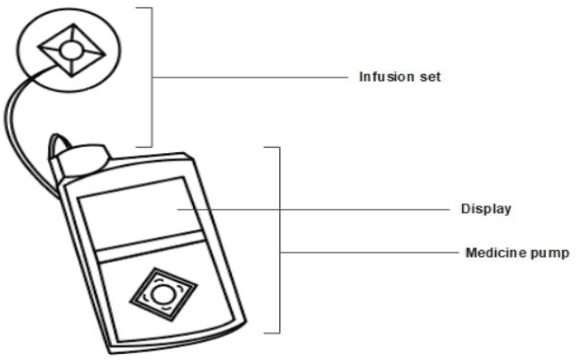
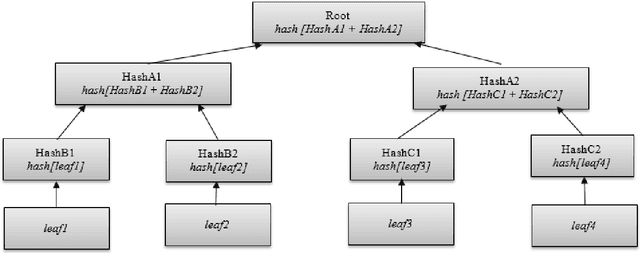
Abstract:Hypoglycemia is an unpleasant phenomenon caused by low blood glucose. The disease can lead a person to death or a high level of body damage. To avoid significant damage, patients need sugar. The research aims at implementing an automatic system to detect hypoglycemia and perform automatic sugar injections to save a life. Receiving the benefits of the internet of things (IoT), the sensor data was transferred using the hypertext transfer protocol (HTTP) protocol. To ensure the safety of health-related data, blockchain technology was utilized. The glucose sensor and smartwatch data were processed via Fog and sent to the cloud. A Random Forest algorithm was proposed and utilized to decide hypoglycemic events. When the hypoglycemic event was detected, the system sent a notification to the mobile application and auto-injection device to push the condensed sugar into the victims body. XGBoost, k-nearest neighbors (KNN), support vector machine (SVM), and decision tree were implemented to compare the proposed models performance. The random forest performed 0.942 testing accuracy, better than other models in detecting hypoglycemic events. The systems performance was measured in several conditions, and satisfactory results were achieved. The system can benefit hypoglycemia patients to survive this disease.
Internet of Things based ECG System for Rural Health Care
Jul 27, 2022
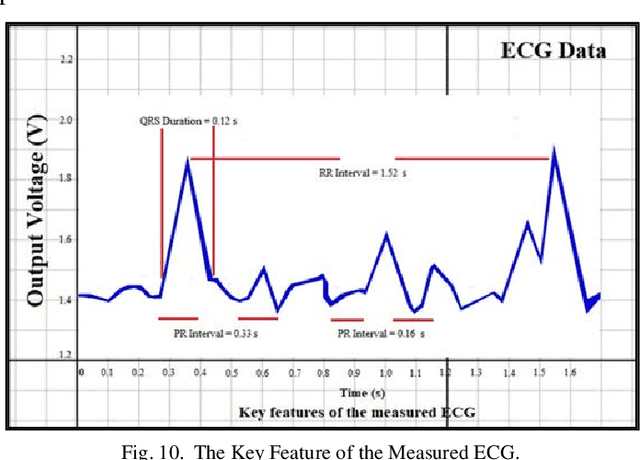

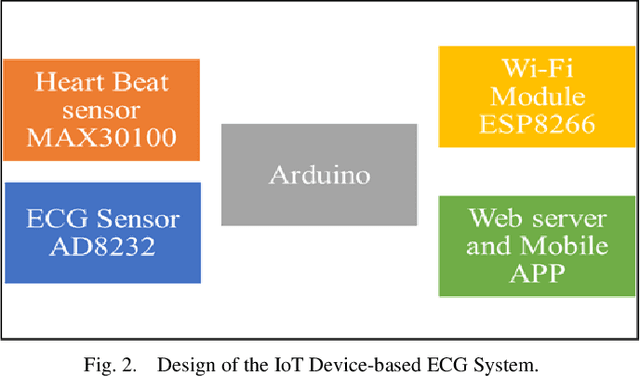
Abstract:Nearly 30% of the people in the rural areas of Bangladesh are below the poverty level. Moreover, due to the unavailability of modernized healthcare-related technology, nursing and diagnosis facilities are limited for rural people. Therefore, rural people are deprived of proper healthcare. In this perspective, modern technology can be facilitated to mitigate their health problems. ECG sensing tools are interfaced with the human chest, and requisite cardiovascular data is collected through an IoT device. These data are stored in the cloud incorporates with the MQTT and HTTP servers. An innovative IoT-based method for ECG monitoring systems on cardiovascular or heart patients has been suggested in this study. The ECG signal parameters P, Q, R, S, T are collected, pre-processed, and predicted to monitor the cardiovascular conditions for further health management. The machine learning algorithm is used to determine the significance of ECG signal parameters and error rate. The logistic regression model fitted the better agreements between the train and test data. The prediction has been performed to determine the variation of PQRST quality and its suitability in the ECG Monitoring System. Considering the values of quality parameters, satisfactory results are obtained. The proposed IoT-based ECG system reduces the health care cost and complexity of cardiovascular diseases in the future.
Early Detection of Fish Diseases by Analyzing Water Quality Using Machine Learning Algorithm
Feb 15, 2021
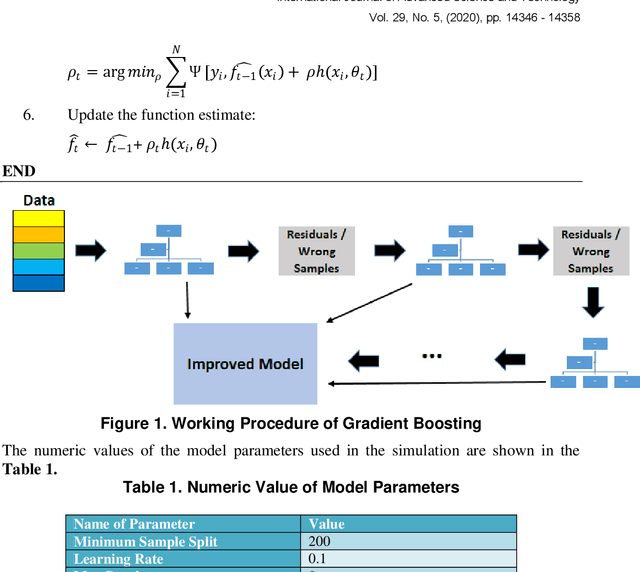
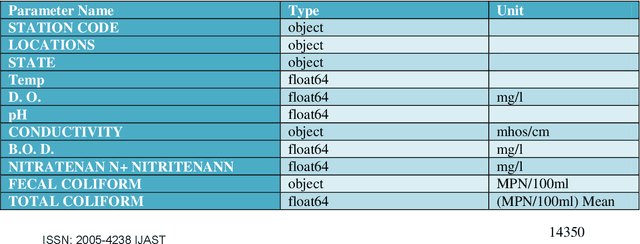
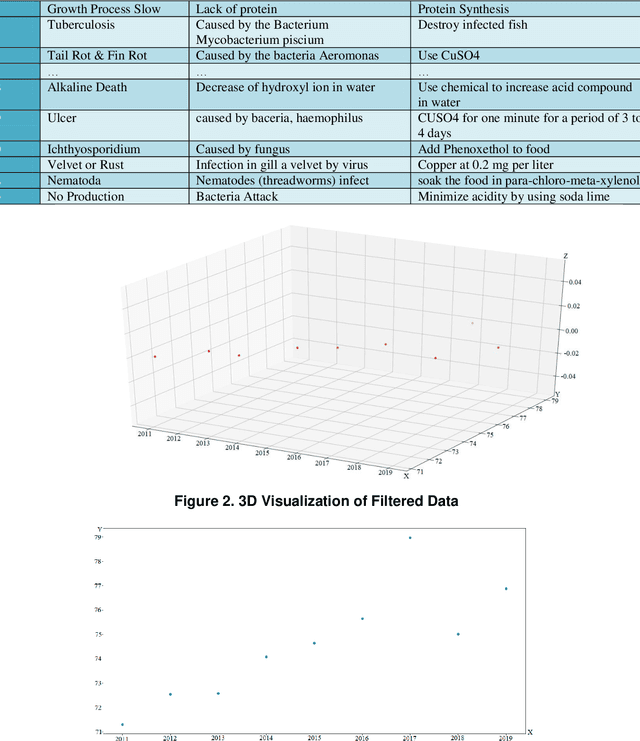
Abstract:Early detection of fish diseases and identifying the underlying causes are crucial for farmers to take necessary steps to mitigate the potential outbreak, and thus to avert financial losses with apparent negative implications to national economy. Typically, fish diseases are caused by virus and bacteria; according to biochemical studies, the presence of certain bacteria and virus may affect the level of pH, DO, BOD, COD, TSS, TDS, EC, PO43-, NO3-N, and NH3-N in water, resulting in the death of fishes. Besides, natural processes, e.g., photosynthesis, respiration, and decomposition also contribute to the alteration of water quality that adversely affects fish health. Being motivated by the recent successes of machine learning techniques in complex relational data analyses in accurate classification and decision-making tasks, a state-of-art machine learning algorithm has been adopted in this paper to detect and predict the degradation of water quality timely and accurately, thus it helps taking pre-emptive steps against potential fish diseases. The experimental results show a high accuracy in detecting fish diseases particular to specific water quality based on the algorithm with real datasets.
Real Time Detection of Small Objects
Apr 14, 2020
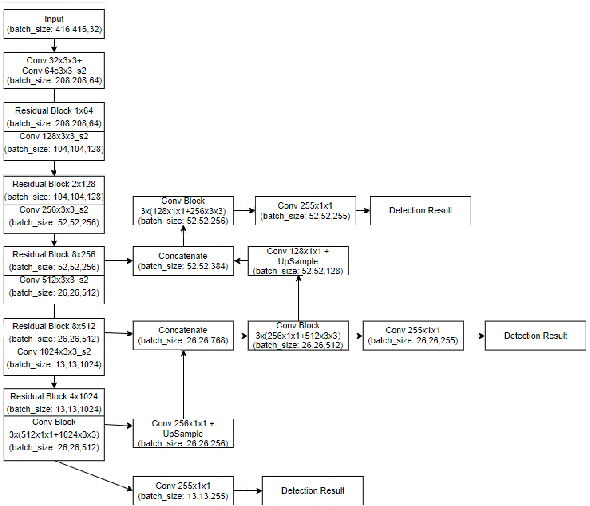

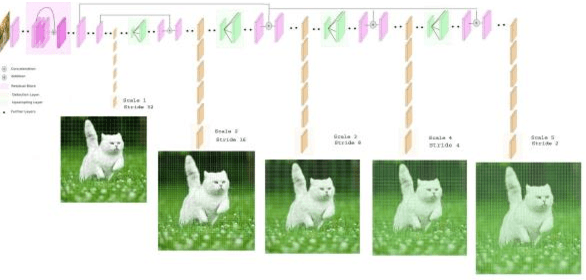
Abstract:The existing real time object detection algorithm is based on the deep neural network of convolution need to perform multilevel convolution and pooling operations on the entire image to extract a deep semantic characteristic of the image. The detection models perform better for large objects. However, these models do not detect small objects with low resolution and noise, because the features of existing models do not fully represent the essential features of small objects after repeated convolution operations. We have introduced a novel real time detection algorithm which employs upsampling and skip connection to extract multiscale features at different convolution levels in a learning task resulting a remarkable performance in detecting small objects. The detection precision of the model is shown to be higher and faster than that of the state-of-the-art models.
* 7 pages, 8 figures
 Add to Chrome
Add to Chrome Add to Firefox
Add to Firefox Add to Edge
Add to Edge